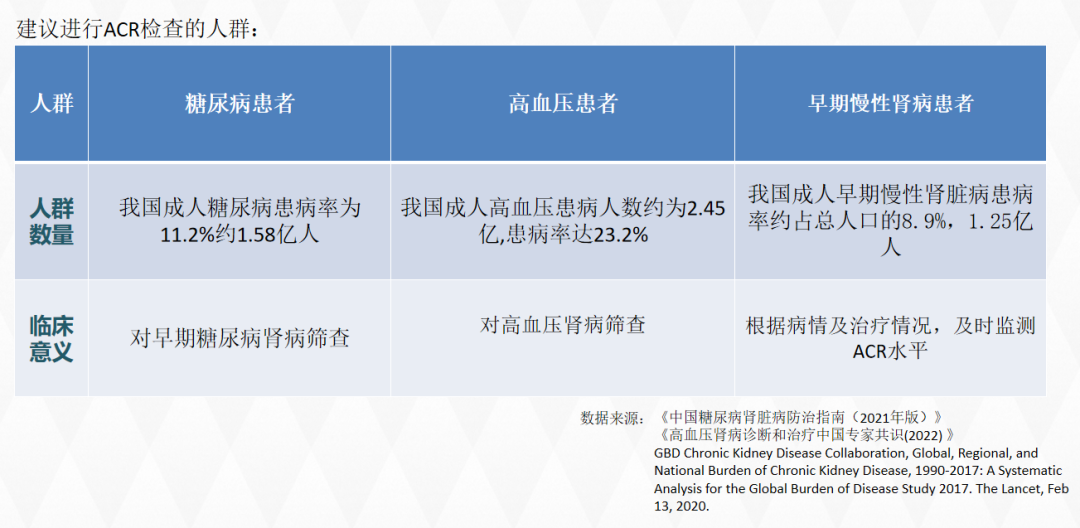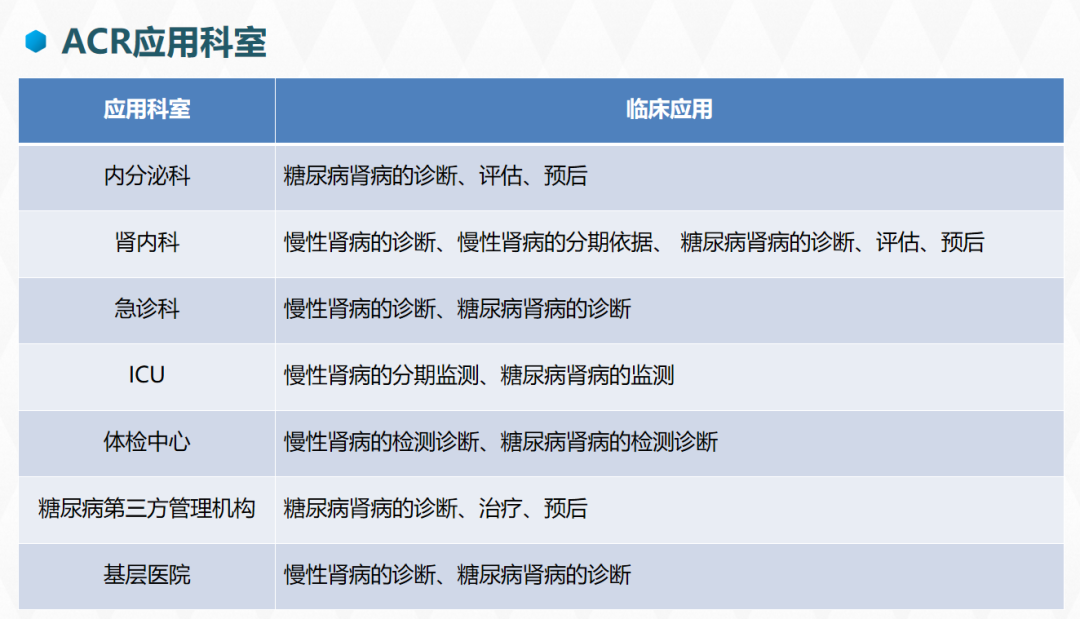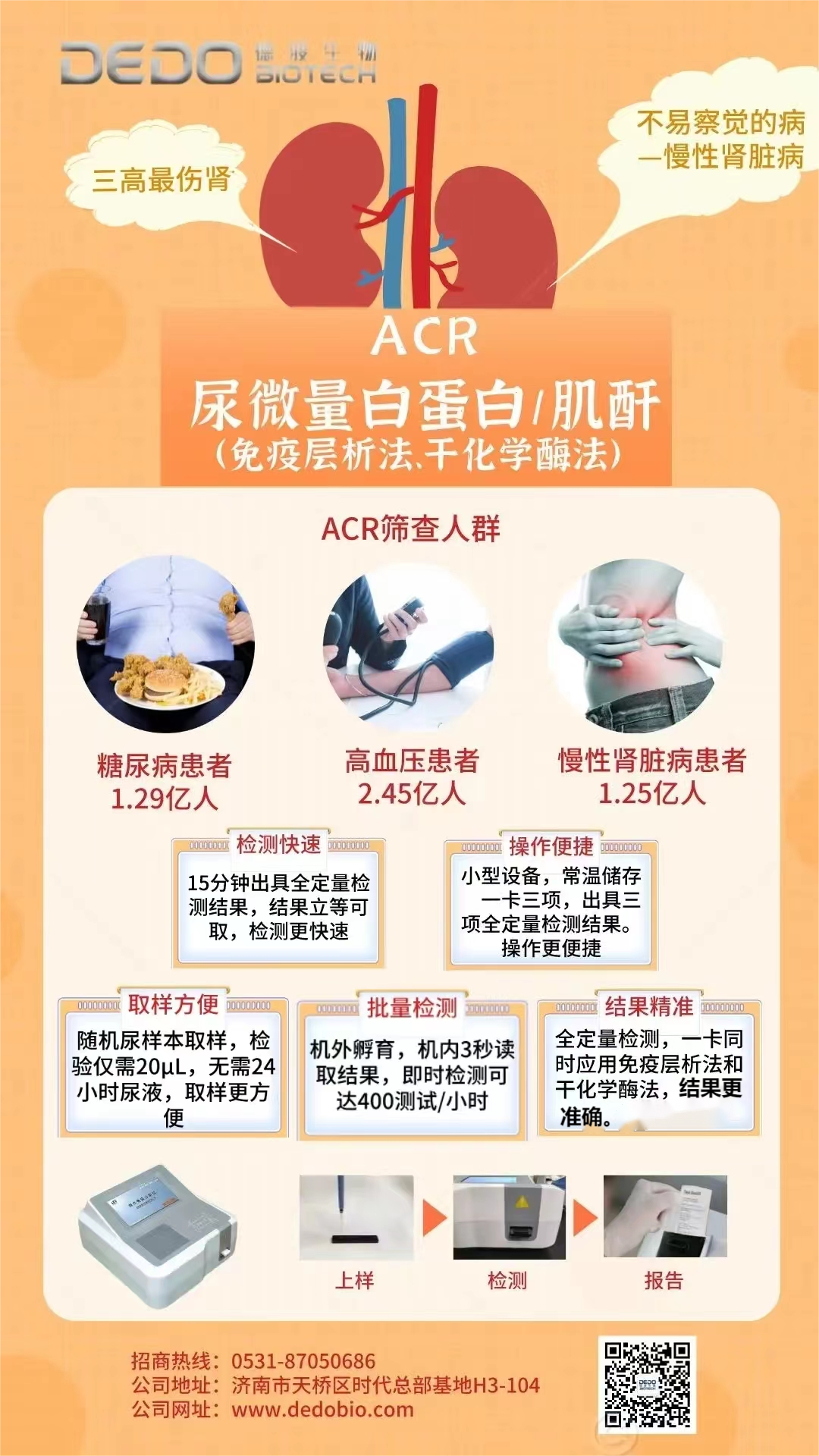24-hour urine protein quantification is the gold standard for evaluating the severity of urine protein, and it is affordable and widely used in clinical practice.
So, in clinical practice, a testing method was developed that can replace 24-hour urine, quantitatively analyze the severity of urine protein, and facilitate patient operation: ACR (Urine Microalbumin Creatinine Ratio), which only requires one-time urine.
What is ACR?
The ratio of microalbumin (mALB) to creatinine (Cr) in urine (ACR) is a sensitive indicator reflecting renal function impairment, used to monitor the excretion of microalbumin in urine. ACR has important value in the diagnosis of various kidney diseases, hypertension and diabetes with early renal injury, and has been listed as the diagnostic and staging standard of early kidney disease and chronic kidney disease by authoritative international guidelines.
ACR has good stability and is convenient to collect urine samples, which can replace 24-hour urine protein testing.

Screening guidance for ACR

Early detection of kidney function and prevention and treatment of kidney diseases, as well as early control of kidney disease development, have become key issues in alleviating the burden of chronic diseases in China.

Product Introduction
Urinary microalbumin/creatinine ratio (ACR) detection kit
(Immunoassay/Dry Chemical Enzyme Method)

The reagent kit is stored at room temperature and away from light, without the need for cold chain transportation, resulting in low storage and transportation costs.
The reagent kit adopts the methodology of immunochromatography/dry chemical enzyme method for detection, resulting in more accurate results.
The reagent kit can detect urine albumin concentration, urine creatinine concentration, and their ratio simultaneously with one sample addition, and the results are accurate.
The sample is ready for testing, and the testing process only takes 15 minutes. The results are immediately available.
The reagent kit supports mid morning urine/random urine sample types.
Guide recommendations
The Guidelines for the Prevention and Treatment of diabetes Nephropathy in China (2021): It is recommended that patients with type 1 diabetes (T1DM) and T2DM with a course of more than 5 years should be screened for ACR at the time of diagnosis to detect DKD early, and at least once a year thereafter.
The Chinese Expert Consensus on the Diagnosis and Treatment of Hypertensive Kidney Disease (2022) states that CKD (Urinary Microalbumin to Creatine Ratio) ACR>30mg/g as defined by the KIDGO guidelines is a necessary condition for the diagnosis of hypertensive kidney disease.
National Guidelines for the Prevention and Management of diabetes at the Grassroots Level (2022): diabetes kidney disease is usually diagnosed based on the increase of ACR and the exclusion of other chronic kidney disease (CKD). It is recommended to use a random urine test for ACR. Random urine ACR ≥ 30mg/g indicates an increase in urinary albumin excretion. Repeated ACR examination within 3-6 months, with 2 out of 3 cases of increased urinary albumin excretion. Diagnosis of albuminuria can be made by excluding other factors such as infection.


